-
Apt-get better with Debian install than Knoppix install?
I have installed Knoppix to my HD. However, after running apt-get upgrade, the mouse no longer responds after rebooting. From another forum, I learned that the problem is related to gpm and can be addressed by the command "killall gpm". Also, in the past, I have experienced other problems after running apt-get upgrade and had to reinstall from the disk to get things working again.
I have seen some comments that using apt-get upgrade will go more smoothly if I install Debian directly rather than installing from Knoppix. If this is true, then it would be worthwhile to go to the extra trouble required to use the Debian installer. Can anyone tell me if the problems encountered with running apt-get upgrade are significantly different with a Debian installer or a Knoppix installer?
Thanks for your help!
-
Code:
sudo update-rc.d -f gpm remove
shutdown -r now
will hopefully fix the mouse.
Knoppix is a mix of Debians Stable, Testing and Unstable and this is what wreaks havoc with apt-get, especially if you dist-upgrade. If you want pure Debian, install Debian. If OTOH you want the easy install of a livecd with the option of trying it out like you can, install Kanotix which is what a lot of us here use. It's based purely on Unstable and won't break up so easily when upgraded. While Debians Sarge (testing) installer is quite easy to use compared to the old installs, it still takes some time to get the packages you want, and to configure it, so Kanotix is more convenient.
-
Senior Member
registered user
I can address the Knoppix/Debian side of things - in the past couple of months I've installed Debian sarge about 10 times. On the same computer! I like it that much! 
Actually, I do like Debian sarge, very much. Part of the high count is that I've installed six different versions of sarge, and I've reinstalled two of them a couple of times just for the sake of getting numbers like the ones I'm going to throw at you here.
My most recent installation was Sunday, of sarge Release Candidate 3 (RC3). It's very near to the time when the team in charge of the present "testing" version will draw a line and say, "We think this mix of packages can be promoted to the new official version ("stable") with some minor bug-fixing tweaks.
In other words, it's a candidate for release. It's no big deal in any way that this is RC3 instead of, say, RC1. They're complete models, like a clay sculpture with all the details in place. Everybody walks all around it, makes notes on what could be adjusted, and if there are enough significant changes then they go to work and produce another.
When it's right, they send it to the kiln as the final product. (One of the major criticisms of Debian is that it takes them a very long time to decide a release is ready. Woody has been the stable release forever. Or it seems that way!  )
)
Another way to look at Release Candidates is as full dress rehearsals of a play. You plan on having a few of them. Usually, you even invite the critics to come to one of them so they can write reviews before the play opens. For me, both RC2 and RC3 have been director's dreams - this audience thinks they're great just as they are.
Now, you may be wondering why I'm answering a question you didn't ask.  I just don't want you to consider installing the current stable release, woody. It won't do the job for you.
I just don't want you to consider installing the current stable release, woody. It won't do the job for you.
I think sarge would - but the whole point of Linux is choice! I haven't even downloaded Kanotix because I'm having fun with a few other distros right now. My needs are being met. For the moment, anyway. 
Right now you can get four flavors of sarge:- - "official" RC3 net-install CD (I - and they - recommend this);
- weekly build of entire CD set;
- daily build of net-install CD;
- Progeny Debian (I also recommend this!).
I put "official" in quotes because on Debian's home page you're told that woody is the official release ... but that there are a couple of other versions (which they call releases) that they're working on. Like the testing release.
So woody is the official Debian release, but the frozen RC3 is the official testing release.  Debian doesn't ever guarantee that a version of testing works, but they do say that this one works for most people. They won't even begin to say that about the weekly and daily builds.
Debian doesn't ever guarantee that a version of testing works, but they do say that this one works for most people. They won't even begin to say that about the weekly and daily builds.
Progeny Debian is from a company co-founded by Ian Murdoch, who also happened to found DebIan. (Ian is Deb's husband.) Progeny is currently called a developer's release, but it works very well, and they just announced they'll be making a commercial release soon.
There are two CDs to Progeny, but for a full desktop environment you use only the first one. (The other has developer stuff on it.) This is almost pure sarge - they've made it very clear that Progeny is and will be just plain sarge except for an occasional, necessary tweak.
(Of course, you could say the same thing about Knoppix.  Knoppix-on-CD, anyway. Kanotix says it's almost pure sid, which is one release cycle down the line from sarge.)
Knoppix-on-CD, anyway. Kanotix says it's almost pure sid, which is one release cycle down the line from sarge.)
Sarge's official net-install CD is 104 MB. This brings up a functional but quite stripped Debian - there's not even a whiff of a GUI. Then you connect to the net and the system automagically downloads anything else you want and installs and configures it.
I've timed this very carefully, but the minutes don't mean anything because my internet connection is pretty unusual.
But the time to download a desktop environment (that's exactly equivalent to Progeny) is the same as the time to download an ordinary, full CD image. After that, the automatic installation and configuration process takes about the same time as Knoppix needs to pull stuff off your local CD and install it.
So with Knoppix, Kanotix, and Progeny you download and burn one full CD. With sarge net-install you take the same time as a full-CD download, and you do burn one CD (a smaller one). So far they're even in time. But with sarge there's also the time required to download the initial 104-MB net-install CD image. That's the only time penalty.
In fact, sarge has two advantages if your internet connection is unreliable. You can load a configuration file with more than one download site, and the automatic process will switch away from any site it's having trouble talking to. (And that could be the site's fault.)
Also, the net-install is downloading many small files - if a connection drops in the middle of one file, the process only loses a minute or two instead of having to start over at the beginning of a 700-MB CD image.
It's been a long time since I've had that trouble with a major distro ... until a few days ago. I had to try five sites to get a complete download of Knoppix 3.8.1. I'm sure this is due to the heavy load that a brand-new release generates - I didn't have anything like that problem getting 3.7.
By the way, the complete set of sarge is 14 CDs.  But almost everything for that desktop environment is on the first two. There's a tiny, tiny bit at the end of the installation that requires the third. I don't even remember what it was, but the installation doesn't tell you ahead of time that it'll need three CDs.
But almost everything for that desktop environment is on the first two. There's a tiny, tiny bit at the end of the installation that requires the third. I don't even remember what it was, but the installation doesn't tell you ahead of time that it'll need three CDs.
That was annoying.  I was tempted to not go back for the third CD, but I was curious whether the one or two error messages I saw meant that only a few files were missing.
I was tempted to not go back for the third CD, but I was curious whether the one or two error messages I saw meant that only a few files were missing.
Yup! I'm sure there was room on disk 2 to replace some of the extras with the wee bit needed by the standard desktop - which you choose with a single click in a menu.
Hmmph. But a weekly build won't be nearly stable enough for you, so that doesn't matter anyway.
One final note of comparison, this time between Knoppix and Kanotix on one hand, and Progeny and sarge-from-Debian on the other. (I'm making a big assumption that Kanotix is just like Knoppix in this comparison because its website describes it as a rebuild of Knoppix - but remember that I've never actually downloaded and installed Kanotix.)
Klaus Knopper designed Knoppix to be a complete and yet portable work environment that weighs considerably less than a laptop computer. So that 700-MB CD holds a lot more than just 700 MB of software, as you know. Knoppix (and Kanotix, I presume) unfolds to around 2 GB on your hard drive.
The default desktop environment of Progeny and sarge-from-Debian comes to about 1.4 GB. I haven't yet looked at the package-by-package comparison lists that I've made - with three simple Linux commands.
So I don't know what Progeny and Debian sarge "lack" in actually-installed software. But for what I do, there's no difference at all in functionality. Unix-like operating systems usually have two or three programs that do (almost) the same thing in lots of categories.
Each is a different way to achieve the same ends, more or less. Some will have more options, or different ones, or.... I can't find the post right now, but I recently counted 11 programs installed by Knoppix that all have the core function of editing text. Those were the ones I recognized!
Of course OpenOffice.org has a very different purpose from emacs, which is different from vi(m), which is different from ed. (Yes, ed - which first showed up in Unix around 20 years ago, I think.)
But really - 11? 
Finally, to answer your question (which Markus already did) about package upgrades. It's harder for an upgrade to break a single-release Linux - whether it's Debian, Fedora, Slackware, or whatever - than it is to break a mixed release.
Often what breaks is small, and it may not even affect you. But it does make maintenance harder.
Also, try one of the GUI front ends to apt. Debian supplies synaptic, KDE has kpackage, and GNOME has gnome-apt. (I forget how many of these that Knoppix supplies, but kpackage for sure.) They all give you good visual indications of what's installed and what could be upgraded if you want.
(Don't upgrade stuff you don't use. These package managers also let you remove what you don't need - except sometimes you find that a useless little toy can't be deleted because it's integrated into KDE or GNOME - which is one reason why people say these two giants are bloated.)
As you're picking and choosing, synaptic and friends will tell you if something you want requires them to also fetch something you didn't know about. That's built into apt-get, but it's less noticeable from the command line.
Then you punch a button, and off they go. They automatically download, install, and configure - just like with the sarge net install (because net install uses apt-get). Occasionally they'll stop to ask you one or two configuration questions about a particular package, but it's really very painless compared to the old days and other ways.
So. If you have more questions - and you're brave enough to ask them after this long rant  - please write again!
- please write again!
-- Ed
-
Thanks to both of you for your kind and helpful replies to my question. I downloaded Kanotix to take a look but decided not to install it on the hard drive because I read elsewhere that people had problems using apt-get upgrade with it, even though it is less of a "mixed" release than is Knoppix. I bit the bullet and installed Debian Sarge using the NetInstall download. The procedure was much simpler than I had previously believed, although it was a bit time-consuming. (The only part that left me a bit bewildered was the installer option for setting up RAID, but I read online that it is easier to set up RAID separately from the Debian installation, using the command line.) I am extremely happy with the results so far. Synaptic is very easy to use. The default Gnome destktop looks great and was very intuitive even though I have been using KDE. When I used apt-get I didn't get lists of warnings that I used to get when using the installed Knoppix. If apt-get continues to work smoothly, I will be a confirmed Debian convert. I hope that people will reconsider their fear of the Debian installer, which is a lot easier to use than its reputation suggests.
-
Senior Member
registered user
Heh - I was going to warn you about one annoying bug in the net installer. Guess I don't need to now! 
I'm very glad your installation went well! Debian was the first Linux I tried a few years ago, and I had a horrible time with it. Then I installed Red Hat, and that's what kept me from abandoning Linux altogether.
Debian's been around so long that you know a big portion of its reputation was "earned" honestly. Even the installer that's still in the stable distribution just isn't adequate. But I think with apt, much better hardware detection in the net installer, and sarge mature enough to be close to release as stable, people should cut Debian some slack now.
Keep in mind that Debian's apt and Red Hat's RPM are widely used in other distros, whether they're a re-packaging of Debian and RHEL/Fedora or completely novel. So if you want to switch down the road, you'll already have experience - good experience, hopefully - with a solid package-management system.
Also, you can install anything from KDE you want. In fact, I think its display manager (kdm) is better than GNOME's (gdm). The only place this applies, though, is in the ability to switch window managers at the login screen. For some reason, gdm just doesn't seem to handle this as well as kdm. But if you never want to try out other window managers - never mind! 
(The display manager is completely independent of the window manager. You can use kdm with GNOME or xdm with twm, or ... !)
Some other notes: run apt-get update regularly so you can see which of your packages have upgrades available. The Debian security team gives somewhat less attention to the testing release than to stable, so (it seems to me) staying current with what the maintainers put out is a little more important with testing.
Try gnome-apt and kpackage - they're organized a little differently from synaptic, so sometimes it feels easier (to me) to find what I'm browsing for with them. And check out the optional apt tools. The developers are trying to make the package database more useful, and the projects look interesting.
And be sure to have fun! 
-- Ed
Similar Threads
-
By OpenOffice.o in forum Hdd Install / Debian / Apt
Replies: 1
Last Post: 12-17-2005, 11:07 AM
-
By stoned_bush in forum Customising & Remastering
Replies: 1
Last Post: 09-23-2005, 10:21 AM
-
By Kayen in forum Hdd Install / Debian / Apt
Replies: 14
Last Post: 03-29-2005, 12:42 PM
-
By Jez in forum General Support
Replies: 4
Last Post: 08-09-2004, 09:06 PM
-
By freier in forum Tips and Tricks
Replies: 0
Last Post: 06-03-2004, 12:16 PM
 Posting Permissions
Posting Permissions
- You may not post new threads
- You may not post replies
- You may not post attachments
- You may not edit your posts
-
Forum Rules

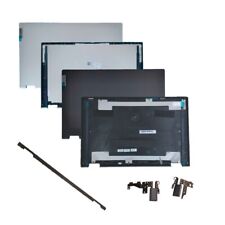
NEW For lenovo ideapad Flex 5 15iil05 5-15ITL05 5-15ALC05 LCD Back Cover Hinge
$65.79

NEW For Lenovo Yoga 730-15IWL 730-15IKB Upper Case Palmrest Backlit Keyboard US
$78.59
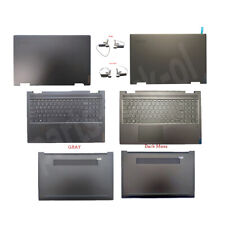
New Back Cover/Palmrest Keyboard/ Hinge For Lenovo Yoga 7-14ITL5 82BH 7-14
$142.59
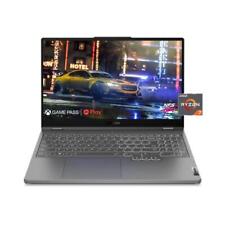
Lenovo Legion 5 15.6" Gaming Laptop AMD R7 7735HS RTX 4060 16GB RAM 512GB SSD
$999.99
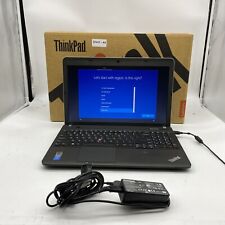
Lenovo ThinkPad E540 Intel i7-4702MQ 2.2GHz 16GB RAM 500GB SSD W10P w/Charger
$82.00
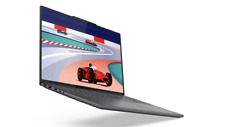
Notebook Lenovo Slim Pro 9 Laptop, 16" Glass, i9-13905H, GB, 1TB SSD
$1051.99
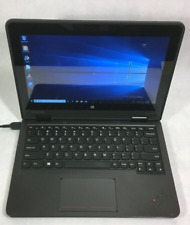
Lenovo ThinkPad Yoga 11e 11.6" 2in1 Touch Intel Core i3 4GB RAM 128GB SSD Win10
$59.00
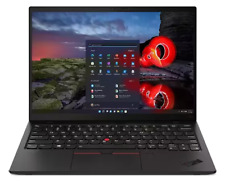
Lenovo ThinkPad X1 Nano 13" Touchscreen 2K i7-1180G7 16GB/256GB Win 10 Pro
$599.69
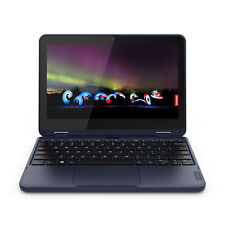
Lenovo 500w Gen 3 Laptop, 11.6" IPS Glass, N6000, 8GB, 128GB SSD, Win 11 Home
$209.99

Lenovo 2-in-1 Touchscreen Laptop/Tablet PC 11.6" Windows 10 4GB RAM 250GB SSD
$104.99



 Reply With Quote
Reply With Quote










